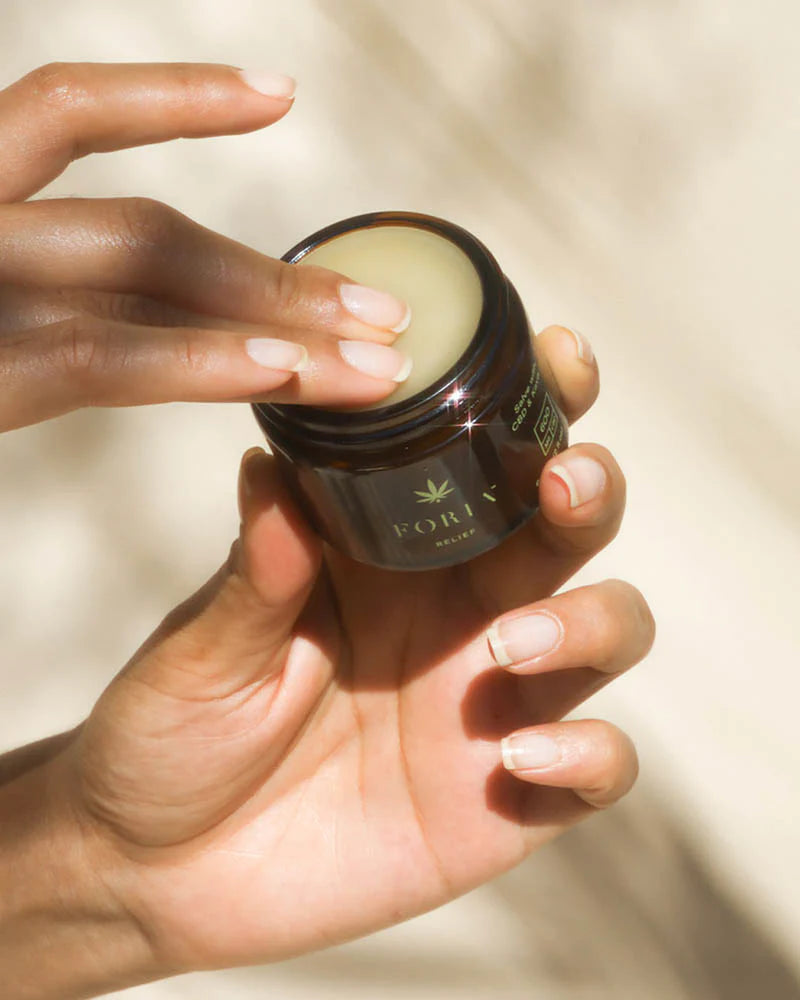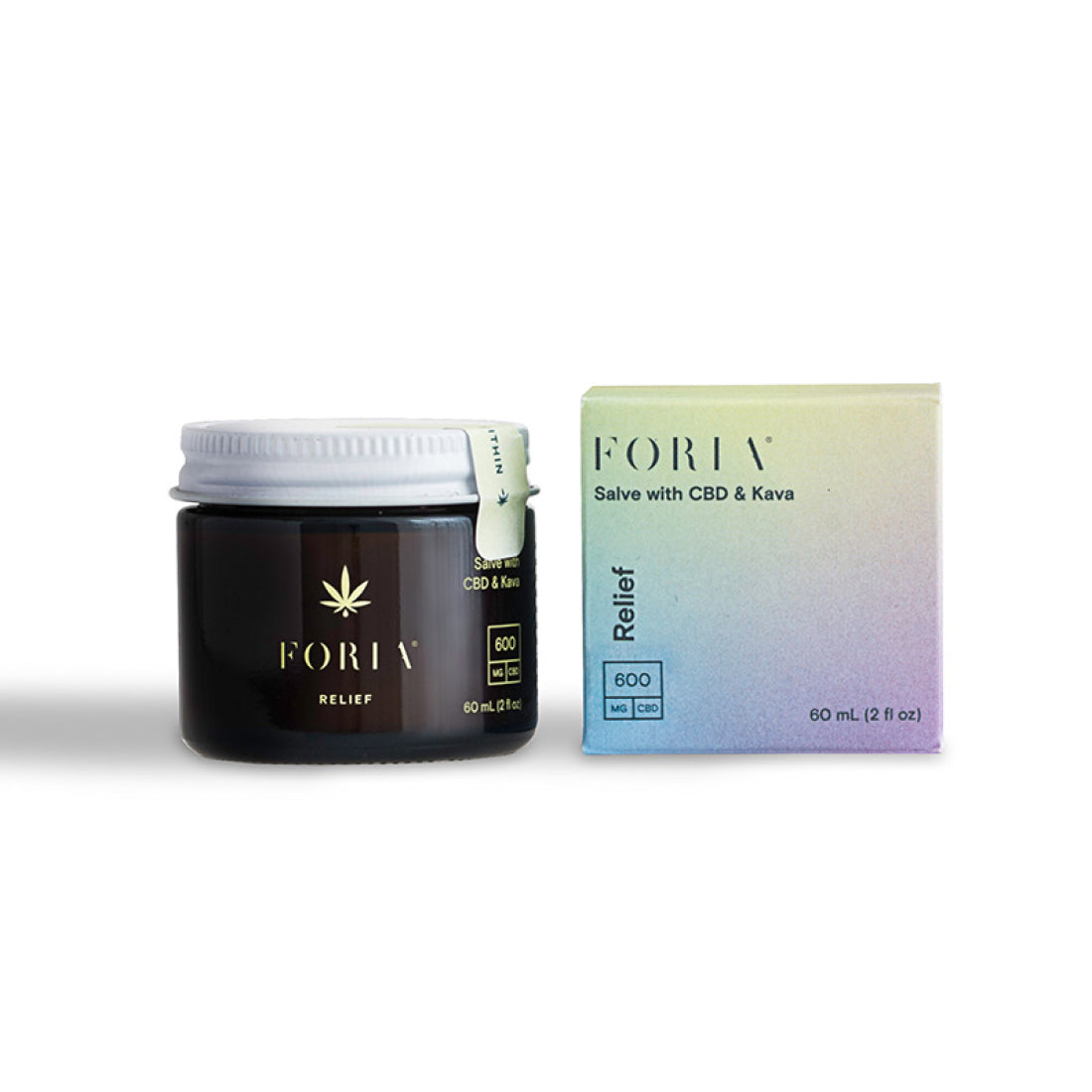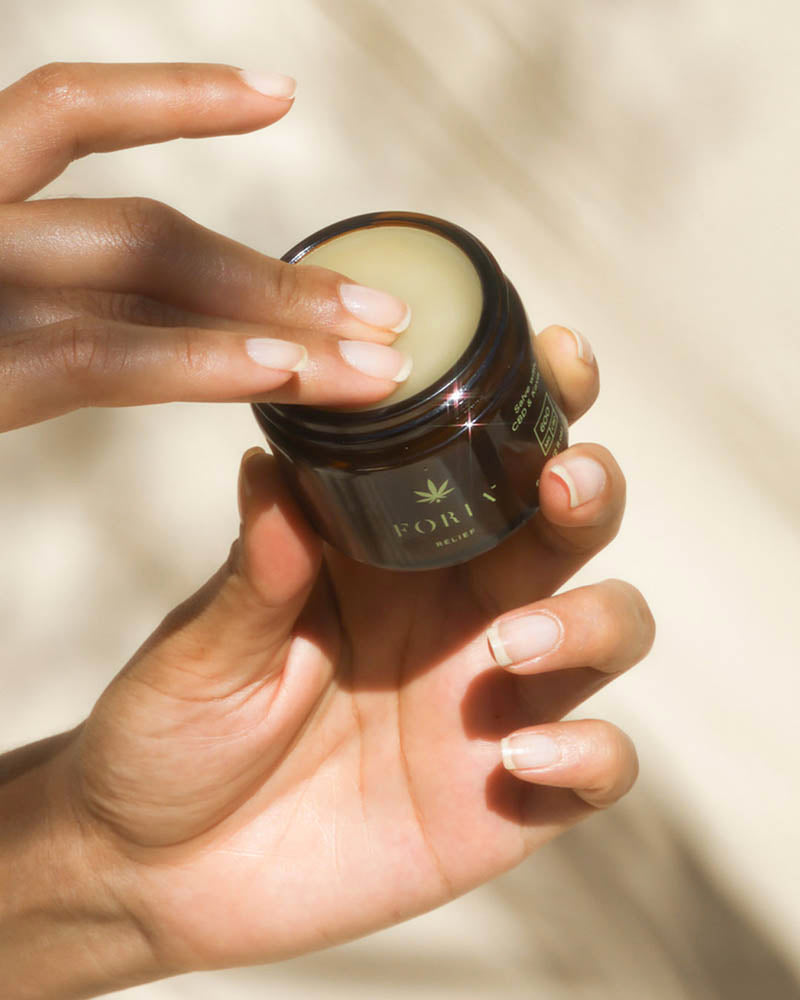There are a lot of reasons to be in awe of our periods. Their cyclical nature, the reminder of how much is happening within our bodies, their potential connection to the never-ending cycle of the moon and the tides — and yet, none of that takes away from how not-great or even downright debilitating period cramps can feel.
The good news is that if you are suffering from menstrual cramps each month, a few methods can help provide relief.
What Are Period Cramps?
During our periods, our body sheds the thick uterine lining formed during other stages of the menstrual cycle. Without a fertilized egg, hormonal shifts occur to promote muscle contractions in the uterus to help shed that lining.
Period cramps (also known as dysmenorrhea) occur when those muscles in the uterus contract, leading to the discomfort that has so many of us down for the count each month. A hormone-like chemical called prostaglandins is a particularly pesky culprit.
During our period, prostaglandins are produced to encourage even stronger contractions and swelling. While this process is useful for shedding the unneeded uterine endometrial lining, it often feels anything but useful when it comes to the discomfort these contractions can cause around the abdomen, lower back, and thighs.
What Makes Period Cramps Worse?
Period pains and how we experience them can vary drastically from one person to another and even from one period to the next, depending on a few factors at play.
Hormonal Imbalances
Hormones serve as vital chemical messages that send signals throughout the body to support regular biological function and help maintain homeostasis.
So, when we experience any sort of hormonal imbalance, the messaging system our body relies on can get thrown out of whack, leading to potentially uncomfortable or confusing symptoms. And when it comes to our reproductive hormones, an imbalance can show up during our periods.
Our reproductive hormones, such as estrogen and progesterone, are produced in the ovaries and help regulate the menstrual cycle, sex drive, and more. If these hormones become out of sync for whatever reason, they may present in painful sex, heavy periods, or severe cramping.
Reproductive hormone imbalances can also cause an increase in prostaglandin, leading to even worse menstrual cramps.
The role of hormonal imbalances in period pain is why hormonal birth control is a common remedy for extremely painful cramps. By affecting hormone levels, certain birth controls can help keep the uterine lining from becoming as thick, causing less pain when it’s time to shed it.
Dietary Culprits
If your period makes you feel snacky, it can help to know that certain foods may play a role in reducing the intensity of cramps, while other foods are best avoided to help make period cramps a little less ouchy.
You may want to steer clear of foods that can cause bloating or constrict blood vessels, such as salty snacks, caffeine, or high-fructose corn syrups.
At the same time, certain vitamins, minerals, and nutrients have been found to help limit swelling associated with menstrual discomfort. Munching on fiber-rich food full of Omega-3 fatty acids, such as nuts, avocados, and berries, may make for a more pleasant period.
Studies suggest that certain minerals like magnesium or herbs, including cinnamon, fennel, ginger, and chamomile, can also relieve cramps, making a case for a hot mug of herbal tea whenever period pain has you down.
And if you’re craving something sweet, try snacking on dark chocolate. Choc-full of Omega-3 fatty acids and antioxidants, dark chocolate can help reduce swelling, increase blood flow, and elevate the mood with antioxidants that may enhance feelings of pleasure.
We’ll say “yes, please” to all of the above any day of the month, especially when Aunt Flo has us needing a feel-good boost.
Lack of Exercise
When we are shedding blood and enduring all of the discomforts that come with it, the last thing we may want to do is move our bodies. But, while chocolate and a tv marathon during those heavy-flow days seem like the dream, too much time spent in one spot may actually make our menstrual period cramps worse.
This is because moving our bodies releases hormones such as beta-endorphins, which can help relieve physical discomfort and boost our mood.
Aerobic exercise that boosts the heart rate and increases blood flow may be particularly useful in relieving period cramps. It is recommended to move your body at least three times a week to help reduce menstrual pain with exercise.
This can look like walking briskly, swimming, roller skating, or dancing around your room. As always, listen to your body and engage in movements and exercises that feel good to you to help you get the most from your discomfort-busting routine.
Medical Conditions
While it’s almost universal for uterus-having people to experience some level of discomfort in the days before or during menstruation, certain medical conditions can cause more severe painful cramps.
Uterine fibroids or growths, pelvic inflammatory disease, and endometriosis are underlying gynecological conditions that may be at the root of extremely or unusually painful periods. If you’re concerned about the level of discomfort you experience during your period, reach out to your healthcare provider or OB/GYN.
How Can You Relieve Period Cramps?
Period pain is normal, but you shouldn’t need to suffer alone each month. From easy home remedies to support from your gynecologist, here are a few ways to help find relief that don’t involve pain relievers like Advil, Motrin, or acetaminophen.
Mindful Exercise
You may know that meditation can help calm the mind, but how about warding off uncomfortable cramping? Practicing mindfulness involves existing in the present moment and remaining intentionally aware of your surroundings and emotions without judging them.
This practice has the potential to not only elevate the mood and shift our perception of discomfort but may also play a more physiological role, too, by lowering stress levels and increasing oxygen flow and blood circulation — all of which may help reduce menstrual discomfort.
Meditation’s potential to boost mood and promote emotional regulation may also help support you through any mood changes and emotional stress that can accompany PMS or period cramps.
You can incorporate mindful exercises into your time of the month by taking a few minutes to breathe your way through a guided meditation, centering your mind on the awareness of how your breaths feel moving through your body and gently pulling your thoughts back to the present moment when they start to stray. Let the relaxation flow through you!
Apply Heat
The warmth of a heating pad or hot towel doesn’t just feel good against the skin (although that is definitely a plus, too), but it can literally help relax the muscles in the uterus to ease cramping and discomfort.
Another plus is that heat is known to increase circulation, and boosting blood flow to the abdomen during your heavy-flow days can help soothe feelings of discomfort. You can even target cramps from the outside and in by sipping on hot water or tea as you relax with a heat patch or pad. The warm drink will also help boost blood flow and relax uterine muscles.
So set some time to steep in a warm bath, grab your favorite microwavable heating pad or hot water bottle, get cozy under your covers, and let the warmth work its relaxing magic.
Topical Salves
Many of us are used to reaching for over-the-counter pain relievers like ibuprofen or Tylenol when period pain has us down in the dumps, but these medicines can be harsh on the stomach — the last thing we need when already dealing with cramps.
If you are hoping to find a potentially gentler and more natural source of pain relief, research suggests that applying plant-based topical salves to the abdomen may also help ease period cramps. Certain botanicals and essential oils such as lavender, chamomile, rose, and ginger may provide soothing aromatherapy that can help manage stress levels and support relaxation when massaged into the stomach.
Even the simple act of massaging a salve into the stomach may provide further relief by helping relax the muscles and soothe uterine spasms. Try massaging the salve into your lower abdomen with gentle, circular motions and feel the calmness set in.
You can even try some easy at-home acupressure massages to lessen the discomfort. This could be a great time to practice some mindful exercises, too!
De-Stress
Who among us hasn’t experienced the tension and discomfort associated with stress at one point or another? While the stress hormone cortisol is useful in the short term, it is believed to increase inflammation and muscle contractions as the body plunges into fight-or-flight mode. It can affect blood flow and the immune system as the body hyper-focuses its attention on the perceived threat.
Chronic stress for long periods can increase muscle tension and swelling associated with bloating, cramps, and discomfort. This is bad news for those uterine muscles already experiencing more swelling and contractions, thanks to the pesky prostaglandins during your period.
The good news is that finding ways to zen out and destress can reduce stress levels, which in turn can promote blood circulation to help relax the muscles, as well as increase feel-good neurotransmitters such as dopamine in the brain. These feel-good friends may also play a role in increasing our tolerance to pain for a less icky period all around.
And luckily, the tools that can help you destress are often what you’re already craving during a heavy flow day. Try taking a relaxing warm bath, putting on a feel-good movie for some laugh therapy, or lowering your stress levels with a little self-loving.
Vaginal Suppositories
Like topical forms of relief, vaginal suppositories take a localized approach to reducing swelling and easing discomfort within the uterus.
Our all-natural plant-based CBD Relief Melts work with the body’s naturally-produced endocannabinoids to help support healthy blood flow and oxygen to the smooth uterine muscles.
Easily insertable into the vagina or rectum, these small CBD suppositories are quickly absorbed through the mucous membranes as they melt to provide a deep sense of relief where needed most. Settle in and let those bad vibes melt away.
Have an Orgasm
Ever notice that you feel, well, a little hornier on your period? It’s not your brain simply seeking a distraction from period pain — the changing estrogen levels we experience during that time of the month may boost libido.
And whether you’re feeling in the mood or wanting nothing more than to cozy up with your heating pad on the couch, letting things get a little frisky can actually help relieve discomfort. Why? When we orgasm, it triggers the release of dopamine and serotonin.
As a neurotransmitter that plays a role in helping the brain process pain, dopamine can be a natural pain reliever by boosting our pain tolerance, helping make those menstrual cramps less prevalent in the process. Serotonin also helps elevate the mood, which can alleviate some of the mental distress bought on by period pain.
By increasing blood flow to the uterus, a good ol’ fashion orgasm can also help reduce that muscle-contraction-induced discomfort. You may even experience deeper pleasure when fooling around on your period, as the increased blood flow during menstruation can boost sensitivity and double as a natural lubricant.
And, of course, our CBD Sex Oil has your back (and front) when it comes to increasing sensitivity and pleasure even further, no matter where you are in your cycle. So put down a towel, invite your partner to join you, text an eggplant emoji to your current hookup, or be your own best lover, and feel the relief as you get into the flow of things.
See a Doctor
If your severe menstrual cramps are more than a monthly nuisance, are interfering with your daily activities each month, are progressively worsening each cycle, or aren't responding to other remedies, it’s a good idea to check in with your doctor or OB/GYN. They can help determine if there’s an underlying issue causing more severe pain and provide potential methods of relief, such as hormonal contraception, which can include hormonal IUDs or birth control pills.
The Bottom Line
Here at Foria, we are all about prioritizing your comfort and pleasure — every day of the month.
Finding ways to help lift your spirits and tackle period pain during your cycle, whether by taking a long walk, soaking in a hot bath, applying nourishing CBD directly to the source of discomfort, or having some one-on-one time with your vibrator of choice, can all help enhance the pleasure you experience on your period.
This shouldn’t be a week you have to dread each month but rather a time to pamper yourself with soothing self-care. So take some time to find what works for you, and follow along with Foria for more pleasure-boosting tips and tricks.
Sources:
The Effect of aerobic exercise on primary dysmenorrhea: A clinical trial study | PMC
Effects of Mindfulness-Based Stress Reduction on employees’ mental health: A systematic review | PMC
The effects of massage therapy on dysmenorrhea caused by endometriosis | PMC
Featured in this article
Want more? Sign up for our newsletter
By entering your email, you are agreeing to our terms and conditions and understand our privacy policy.










